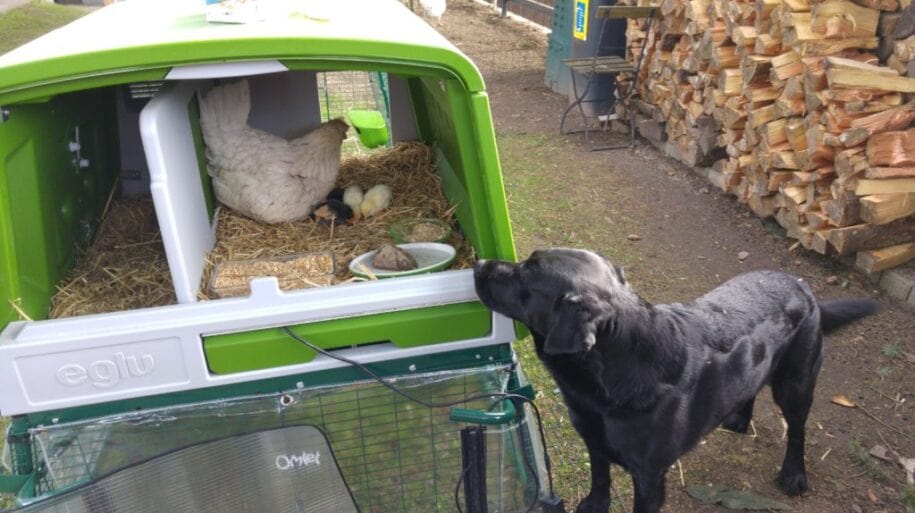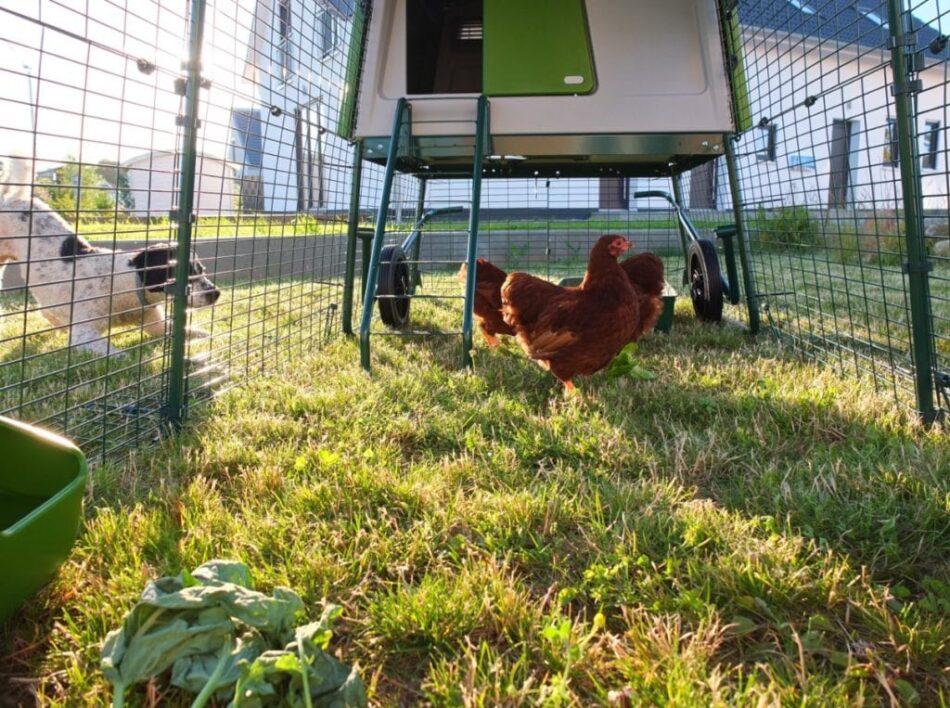7 Expert Tips When Introducing Your New Dog to a Flock of Chickens
You’ve seen it on some TV programmes or driven past small-holdings and seen canines and chooks living in harmony. Maybe they’re a working dog? Maybe they’re a family dog? How do they do it? We’ve put together 7 expert tips to help you introduce your new dog to a flock of chickens.
Understand how dogs and animals learn
Our canine companions, on the whole, are super intelligent and trainable, providing we know how they learn and what we need to do to train them. Introducing them to our chooks can be done and co-habiting harmony does exist. It’s through this small thing we call desensitization. Stay with us for a short Psych 101 and we promise it’ll be worth it.
Desensitization is a process where, through graded exposure, an emotional response is diminished and adapted to a specific stimulus. Now, what the heck does that mean I hear you yell?
In short, you expose your dog to your chooks, from a distance. As they behave how you expect them to, you gradually move them closer to the chooks. You eventually get to the stage, that through the gradual exposure, they’re not that interested in the chooks after all. Their emotional response has diminished, and they have adapted which results in a calm response.
Stay safe
Start with your chooks in their chicken coop or a fenced in area. Keep your dog on leash and feed them treats, providing they are ignoring the chooks. If your dog is paying too much attention to them, move to a greater distance. The aim is to find a distance where they are not having any emotional response towards them.
Grade the exposure
Providing your dog is ignoring the chooks at a certain distance, you can move gradually closer to them. Say you start at 50 feet away, slowly reduce to 45 feet, 40 feet and so on. Continue to praise and reward them for ignoring the chickens. Remember, you want their emotional response to diminish. Keep training sessions short, you don’t want to over tire your dog. Some dogs get hyper-aroused just by being over-tired.
The big moment!
You’ve finally made it to near the coop or chicken fence, providing they are still pretty chilled out in ignorance of the chooks, ask them to sit next to the fence or coop. Praise and reward. If they behave how you expect them to, lengthen the leash, so they can move around the border of the coop or fence, and they can sniff and explore. If they’re calm, the chooks may even come over to investigate. Stay calm. If they start getting excited or lunge/bark at them, remove your dog to a safe distance where they will ignore them again. You may need to do this a few times. What they learn is that to be around the chooks, I must stay calm. If your chooks will stay in a coop or fenced area, this may be where you spend the time repeating the behaviour and praising and rewarding. You may sit with them with a chew or just work on some commands. Again, the aim is to encourage them to ignore the chooks.
If you plan on having free range chickens, and canine and chooks will be mingling daily, read on.
The great escape
When you feel confident that your dog has so far, happily ignored the chooks and not shown any aggression or heightened arousal towards them, you can let them out of their coop/area to roam freely. Keep your dog on their leash. Ask them to sit or lay down if this makes you feel more comfortable. As the chooks are roaming, providing your dog shows little interest, praise and reward them. Again, you may want to give them a chew or even a slow feeding puzzle game for dogs. Your dog just needs to learn than they can co-exist with the chickens without interacting with them a great deal.
Patience is a virtue
You may have to spend a significant amount of time working through these steps, but done in the right way, it will be worth it. Whilst on leash you can walk them through the chooks, they may sniff, and the chooks may also show interest too. The only behaviour you don’t want to see is aggression, lunging or chasing. If this happens, go straight back to the beginning and work on the gradual exposure again.
Riding solo?
The most nerve-wracking part will likely be when you feel they’re ready to be let off leash to mingle on their own. Again, take your time. You may pop the chickens back in the coop and let them explore off leash around a fence. You may prefer to put your dog on a long line (50ft) when in with the free-range chooks. This way, they feel like they have more freedom, but you still have control if it goes pear-shaped. Be realistic though, some dogs just never quite make it to being able to mingle unsupervised with chooks, so watch the behaviour of your dog and make the call.
Conclusion
Chooks to dogs are super interesting, like most things. The long and the short of it, successful introductions mean the chooks are no longer that interesting and your dog learns that to be around them, they simply just need to be calm. Arm yourself with some high value dog treats, chews and any other slow feeder puzzles; start from a distance and encourage the behaviour you want to see. Praise and reward when you do. Grade the exposure. Always stay calm and in control and don’t be afraid of going back to square one if things don’t go as you’d hoped. It may take time, but it will be worth it when you have canine and chooks living in harmony.
This post was written by John Wood at All Things Dogs.
This entry was posted in Chickens

